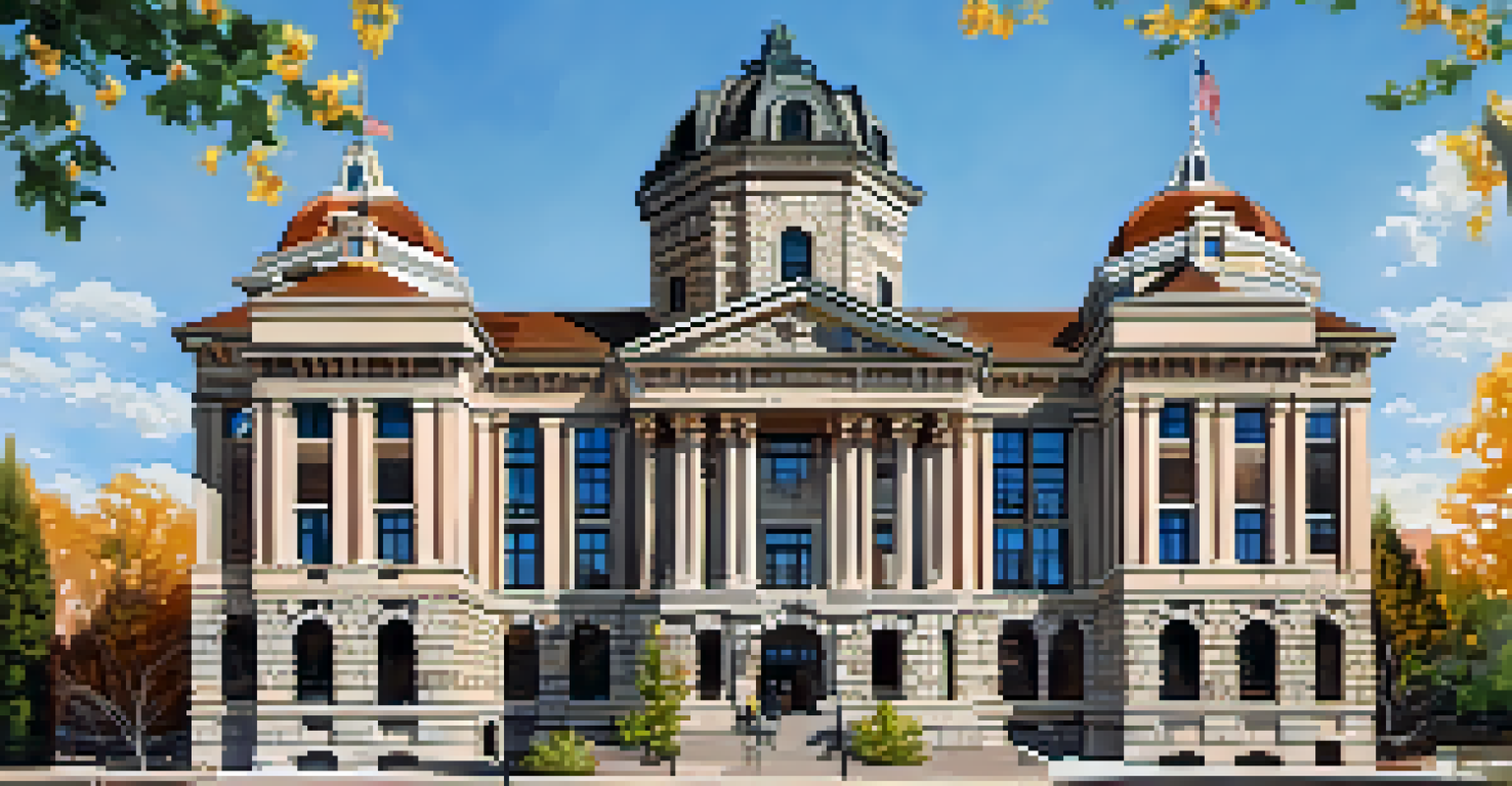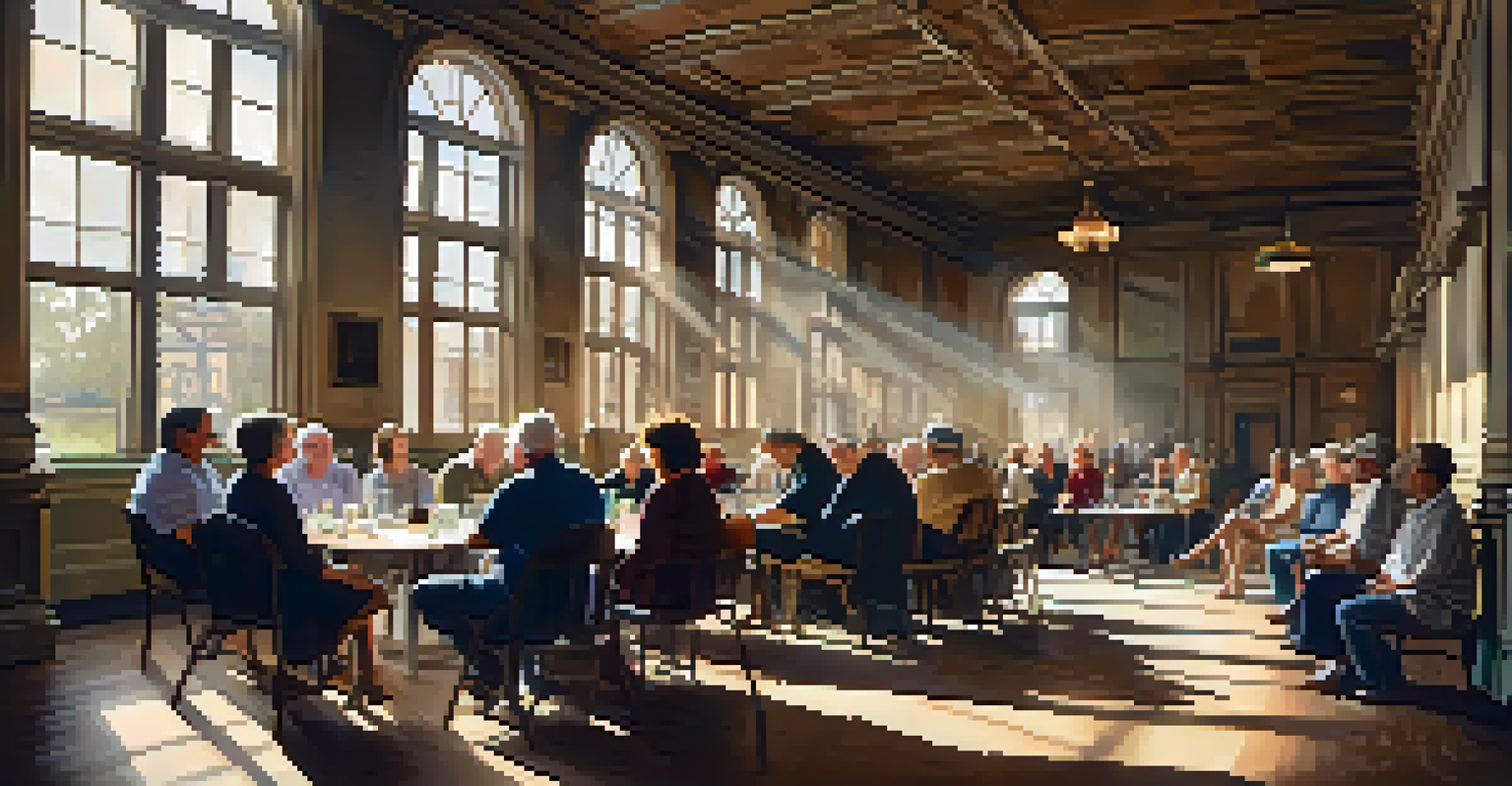Boulder's Historic Preservation Goals and Community Impact

Understanding Boulder's Historic Preservation Framework
Boulder's historic preservation framework is designed to safeguard the city's rich heritage. This initiative not only protects historical buildings but also promotes the preservation of cultural landmarks vital to community identity. By establishing guidelines and regulations, the city encourages responsible development that honors its past while embracing the future.
Preservation is a form of empowerment, a chance for communities to define and share their identities.
The framework is guided by the Boulder Valley Comprehensive Plan, which outlines goals for preserving the city's unique character. This plan serves as a roadmap for various stakeholders, ensuring that historical significance is considered in all urban development decisions. The commitment to preservation reflects the community's desire to maintain its unique charm amidst modern changes.
Additionally, the framework involves collaboration with local organizations and residents. This engagement fosters a sense of ownership and pride among community members, as they work together to protect their shared history. By involving the community, Boulder creates an inclusive approach to preservation that resonates with its diverse population.
The Role of the Boulder Landmarks Board
The Boulder Landmarks Board plays a crucial role in the preservation process by reviewing applications for alterations to historic properties. Their decisions ensure that any changes made to these sites respect their historical integrity and aesthetic value. This careful oversight helps maintain Boulder's architectural diversity and historical significance.

Members of the board are often passionate locals who bring a wealth of knowledge about the city's history and architecture. This local insight is invaluable as it allows for informed decisions that reflect the community's values. The board's commitment to preserving Boulder's character helps foster a deeper connection between residents and their history.
Boulder's Commitment to Preservation
Boulder prioritizes historic preservation through community engagement and comprehensive planning to maintain its unique character.
Moreover, the board also conducts outreach and educational initiatives to raise awareness about the importance of preservation. By engaging the public, they encourage community participation and highlight the benefits of preserving historical sites. This proactive approach strengthens the bond between the residents and their environment, ensuring that history remains a living part of the community.
Impact of Preservation on Local Economy
Historic preservation significantly contributes to Boulder's local economy by enhancing property values and attracting tourism. Properties that maintain their historical integrity often see an increase in their worth, benefiting homeowners and local businesses alike. This economic uplift can lead to improved neighborhood amenities and services, creating a vibrant community atmosphere.
The past is not dead; it is not even past.
Additionally, preserved historic sites draw visitors interested in Boulder's unique history and culture. This influx of tourists stimulates local businesses, from restaurants to shops, providing a boost to the economy. In this way, preserving the past not only enriches the community's identity but also fuels its economic vitality.
Furthermore, historic preservation can create job opportunities in various sectors, including tourism, construction, and conservation. These job opportunities often prioritize local labor and materials, reinforcing the community's economic resilience. By investing in preservation, Boulder not only honors its history but also creates a sustainable economic future.
Community Engagement in Preservation Efforts
Community engagement is at the heart of Boulder's historic preservation efforts. Local residents are encouraged to participate in public meetings and forums to voice their opinions and share their stories. This participatory approach ensures that preservation efforts reflect the values and desires of the community as a whole.
By involving residents in the decision-making process, Boulder fosters a sense of ownership over its historic sites. This connection encourages people to care for and advocate for their community's heritage. When locals feel invested in preservation, they are more likely to support initiatives that protect their shared history.
Economic Benefits of Preservation
Historic preservation enhances property values and attracts tourism, contributing positively to Boulder's local economy.
Moreover, educational programs and workshops are organized to inform residents about the importance of historic preservation. These initiatives empower individuals to take action and become stewards of their community's heritage. Engaged citizens can make a significant difference in preserving Boulder's unique character for future generations.
Challenges Faced by Historic Preservation Initiatives
Despite its benefits, historic preservation in Boulder faces several challenges. One significant hurdle is balancing development needs with preservation goals. As the city grows, developers often seek to maximize land use, leading to potential conflicts with preservation efforts. Navigating these competing interests requires careful planning and negotiation.
Another challenge is securing funding for preservation projects. Many historical sites require significant investment to maintain their integrity, and budget constraints can limit available resources. Innovative funding strategies, such as grants and partnerships with local organizations, are essential to overcome these financial obstacles.
Lastly, raising public awareness about the importance of preservation can be challenging. Some community members may not fully understand the value of historic sites, viewing them as obstacles to modern development. Educational campaigns that highlight the cultural and economic benefits of preservation are crucial to garnering broader community support.
Successful Preservation Projects in Boulder
Boulder has seen several successful preservation projects that highlight the effectiveness of its initiatives. One notable example is the preservation of the Chautauqua Park Historic District, which showcases stunning architecture and natural beauty. This area serves as a beloved community gathering space while honoring its historical significance.
Another successful project is the restoration of the Boulder County Courthouse, a stunning example of Richardsonian Romanesque architecture. The courthouse not only serves as a functioning government building but also stands as a testament to Boulder's rich history. Such projects inspire pride among residents and demonstrate the tangible benefits of preservation.
Challenges in Balancing Growth
The city faces challenges in balancing development needs with preservation goals, requiring careful planning and community support.
These successful initiatives often serve as models for future preservation efforts. By showcasing the positive impact of preserving historical sites, Boulder can encourage more community involvement and support. Highlighting these successes reinforces the message that preserving the past is essential for a vibrant future.
Looking Ahead: The Future of Historic Preservation in Boulder
As Boulder continues to grow and evolve, the future of historic preservation remains a critical concern. The city plans to integrate preservation goals into its broader urban development strategies. This proactive approach will help ensure that Boulder's unique character is preserved amidst ongoing changes.
Community involvement will be pivotal as new preservation challenges arise. By continuing to engage residents in discussions about the future, Boulder can adapt its strategies to meet the needs of its citizens. This collaborative spirit will empower the community to shape its own preservation narrative.

Ultimately, the future of historic preservation in Boulder will depend on balancing growth with a commitment to heritage. By embracing innovative solutions and maintaining open communication, Boulder can create a sustainable future that honors its past while welcoming new opportunities.